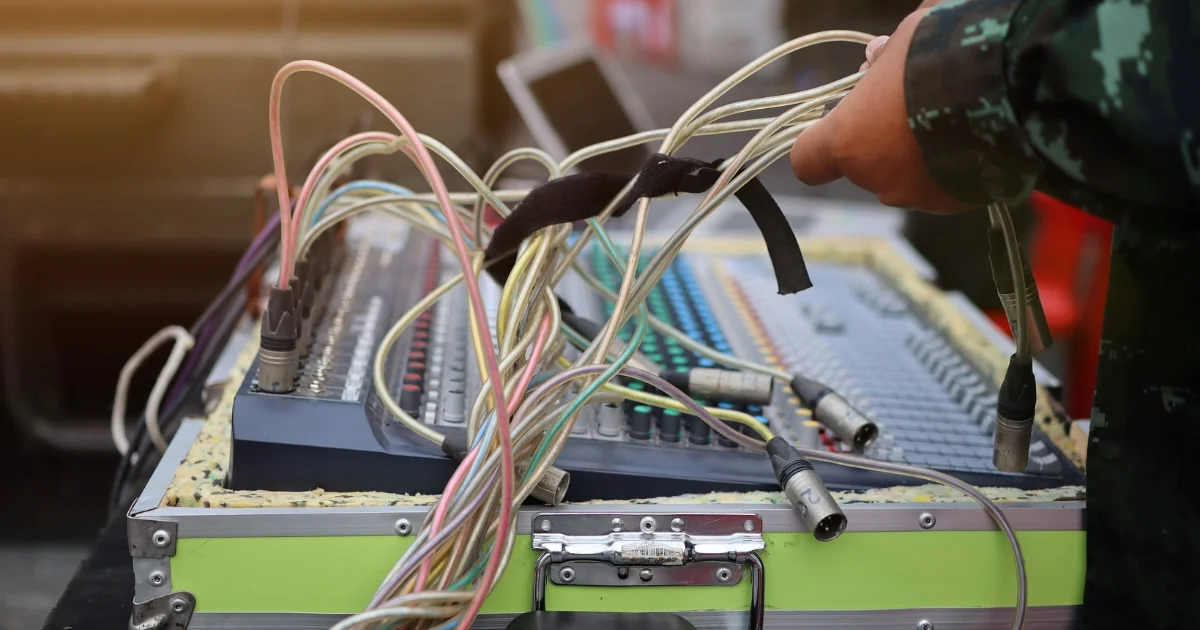
We collect basic website visitor information on this website and store it in cookies. We also utilize Google Analytics to track page view information to assist us in improving our website.

Your equipment is down. The transformer failed—and replacements haven’t existed for years. Every day offline costs thousands. Without that magnetic component, the entire system stalls. This scenario plays out in factories, military installations, and medical facilities every day.
Legacy equipment often remains functional and valuable long after manufacturers discontinue support. When magnetic components fail in these systems, operators face difficult choices: expensive equipment replacement, risky third-party alternatives, or complete system retirement.
For effective legacy equipment repair, reverse engineering magnetics offers another path—recreating essential transformer components even when original documentation no longer exists. By carefully analyzing failed components, specialists can develop replacement parts that match or even improve upon original specifications—extending equipment life and avoiding costly system replacements.
Reverse engineering magnetics means disassembling failed transformers or inductors to uncover their exact design and performance. Like solving a puzzle with missing pieces, engineers must decode not just what it did—but how.
The process typically includes:
Physical examination of the damaged component
Careful disassembly (often destroying the original)
Documentation of winding patterns, wire sizes, and core materials
Electrical testing to determine key parameters
Recreation of design specifications
Prototype development and testing
Production of replacement components
For equipment manufacturers and maintenance teams, this process can salvage mission-critical systems when original parts are no longer available. It's particularly valuable in industrial, aerospace, medical, and military applications where equipment lifecycles often exceed component availability.
Legacy systems in aerospace, defense, and medical industries were built to last—but their magnetics weren’t. As components degrade, support disappears, and OEM replacements become impossible to find, creating what McKinsey & Company calls a growing “obsolescence challenge” for OEMs in industrial and defense sectors.
Finding exact replacements becomes nearly impossible. This creates serious problems, especially in highly regulated industries where swapping parts isn't just about function—it's about compliance. Medical devices, defense systems, and aerospace equipment all require strict validation for any component changes. Even when a similar transformer might electrically work, it could violate certification requirements or safety standards.
When critical infrastructure relies on legacy equipment, the cost of total system replacement often far exceeds the cost of reverse engineering a single component. In many cases, reverse engineering can save tens or even hundreds of thousands of dollars while getting systems back online in days rather than weeks or months.
Not every situation calls for reverse engineering. Sometimes, standard replacements or complete system upgrades are more practical. Reverse engineering typically makes the most sense when:
The equipment holds significant operational or financial value
Replacement systems would require extensive redesign, recertification, or retraining
Compliance-sensitive industries (AS9100, ISO9001, medical) need exact replacements
Downtime costs are extremely high
Original manufacturers no longer support the equipment
The unique magnetics are no longer manufactured
But there are limitations. Very complex designs with proprietary materials or specialized components may be difficult or impossible to reproduce. And without certain key information, engineers might need to make educated guesses about some specifications.

In December 2017, an electronic repair firm approached Electronic Craftsmen with a challenge. They had multiple GE power supplies failing due to problematic transformers. With no design documentation available and more units failing daily, they needed a solution fast.
The customer provided epoxy-sealed transformer samples, traced circuit board layouts, and created a sketched schematic. They also took inductance measurements and captured oscilloscope traces. From this limited information, our team identified the component as a "Gate Drive Transformer"—a device that couples gate-drive circuits to MOSFETs and IGBTs, modifies voltage levels, matches impedance, and provides isolation.
Space constraints on the circuit board made the replacement design challenging. To understand the internal construction, we dissolved the epoxy encasing the failed transformer. This revealed critical details about wire size and turn ratio. Based on the exposed physical characteristics and electrical parameters, we developed an entirely new design.
The original used a toroidal core, but our redesign employed an EFD20 platform using 3F3 core material. The gate side utilized triple-insulated TEX-E magnet wire. Drawing on our experience, we determined that expensive epoxy molding wasn't necessary—a simple air-dry varnish would suffice, reducing costs.
After confirming fit, the customer ordered 10 prototypes. We shipped them within a week. By late February, the transformers were field-tested and approved—followed by a 50-unit reorder. The entire project—from problem identification to field-tested solution—took just two months. Read the full GE power supply case study.
Reproducing magnetic components isn't always straightforward. Engineers commonly face these obstacles:
Without original design documents, engineers have to work backward from a failed component. It’s like trying to rebuild a custom tool just by looking at a broken one—you can measure the obvious dimensions, but the exact materials, internal layering, or subtle design choices aren’t always visible. And sometimes, those are the details that matter most.
Varnishes, insulation methods, and winding techniques all impact performance but may not be immediately obvious. An experienced engineer must make informed decisions about these details based on application requirements and physical evidence.
Core materials significantly impact transformer performance. Ferrite compositions, silicon steel grades, and specialized alloys each have unique electromagnetic properties. Identifying the exact material in a decades-old component can be nearly impossible.
Today's material options often differ from those available when legacy equipment was manufactured. Engineers must select modern equivalents that provide similar or better performance characteristics without altering the component's function in the system.
Legacy equipment wasn't designed with replacement in mind. Space limitations, unusual mounting methods, and unique connection types all restrict redesign options. The replacement must fit exactly where the original did—both physically and electrically.
In aerospace applications, this challenge often intensifies. Reverse-engineered components must meet strict physical and functional criteria—including dimensions, mounting methods, and sometimes weight distribution—to maintain compliance and performance. This article explains why these factors are critical when duplicating flight-certified components.
Reverse engineering isn't just about creating exact copies. It offers opportunities to improve on original designs using modern materials and techniques:
Legacy transformers often fail due to heat. Modern insulation and winding techniques improve thermal management—delivering better heat dissipation while preserving original specs and footprint.
Original equipment often used materials and techniques that have been surpassed by modern alternatives. Triple-insulated wire, advanced core materials, and better varnishes can extend component lifespan significantly. This makes reverse-engineered replacements potentially more reliable than the originals they replace.
Original designs sometimes used expensive manufacturing methods that are no longer necessary. In the GE power supply case study, switching from epoxy molding to air-dry varnish reduced costs without compromising performance.
But some changes risk altering component behavior in unpredictable ways. Engineers must carefully balance potential improvements against the need for functional equivalence. This requires both technical expertise and practical experience with legacy systems.
When facing legacy equipment failures, consider these factors before choosing reverse engineering:
System Value: Does the equipment's operational or financial value justify custom component development?
Urgency: Can you tolerate extended downtime while replacements are developed?
Complexity: Are the failed components suitable for reproduction?
Documentation: What information is available about the original design?
Quantity Needed: Will you need multiple replacements now or in the future?
Reverse engineering might cost more than off-the-shelf components initially, but when evaluated as part of a comprehensive legacy equipment repair strategy, it often proves more economical than complete system replacement. It's particularly valuable when you need multiple replacements over time or when a single component failure would sideline expensive equipment.
Reverse engineering magnetics requires specialized knowledge, testing capabilities, and manufacturing expertise. Electronic Craftsmen brings over 60 years of custom magnetics and power electronics experience to each reverse engineering project.
With AS9100 and ISO9001 certifications, Electronic Craftsmen meet the stringent quality standards required by aerospace, defense, and medical industries. This matters when recreating components for critical systems where failure isn't an option.
The company maintains in-house tooling, material sourcing, and comprehensive testing capabilities—essential for accurately reproducing legacy components. Their experience spans aerospace, defense, industrial, and telecommunications applications, providing the knowledge base needed to tackle diverse magnetic designs.
This expertise means they're not just making parts—they're replicating performance-critical solutions that must function exactly like the originals in complex systems.
Magnetic components are often the weakest link in otherwise reliable legacy systems. When these custom parts fail, entire production lines, labs, or communication systems can come to a standstill. But reverse engineering can bring them back to life.
Advances in materials and design now make it possible to recreate magnetic components that match—or even improve on—original specs. With the right expertise, decades-old equipment can keep running efficiently.
A failed transformer doesn’t have to mean system retirement. Contact us before replacing valuable legacy equipment. Even without documentation, their engineers can often develop a working solution that restores full functionality.
You don’t have to choose between full system replacement and costly downtime. Many legacy systems still have years of performance left—with the right magnetic solutions behind them. Why not explore an option that could save time, money, and extend the life of your most trusted equipment?

